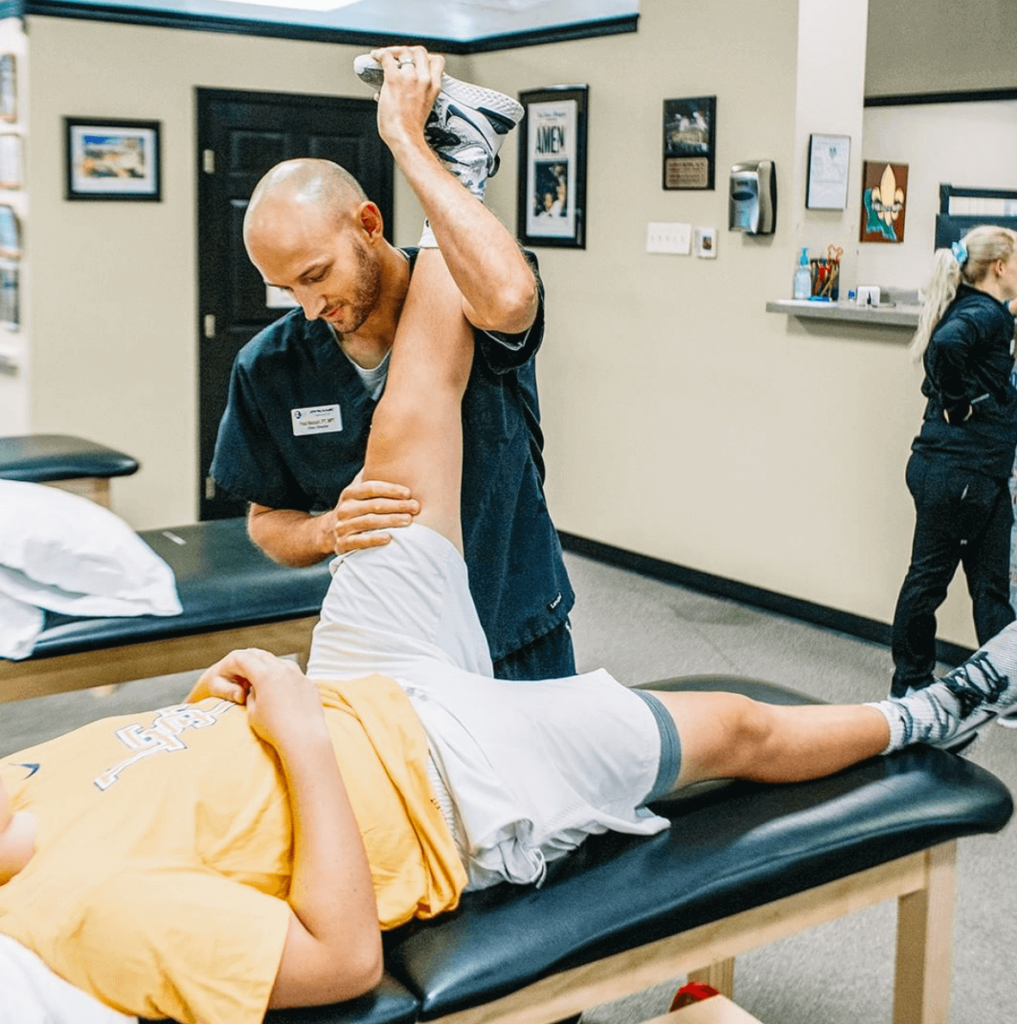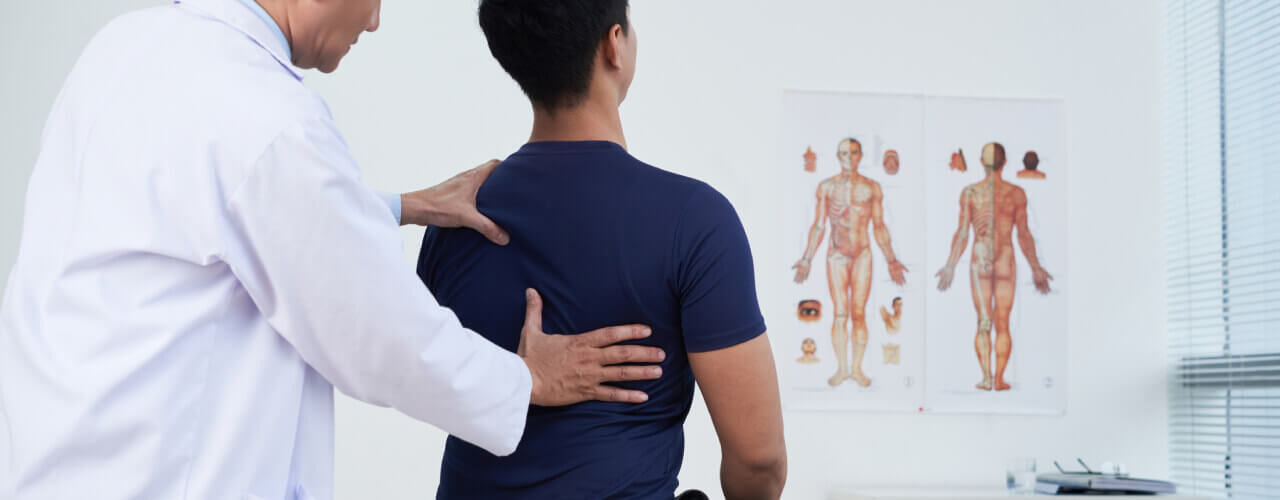Have you ever had a herniated disc? If so, you know the pain can be quite unbearable.
A herniated disc happens when the outer fibrous layer of a spinal disc (usually in the neck or lower back) tears. This allows the disc’s gel-like filling to leak out into the surrounding joint space. In many cases, this can irritate or compress nearby nerves and other structures, leading to uncomfortable symptoms like back pain, neck pain, and pain, numbness, and weakness in an arm or leg.
If you’re currently living with a herniated disc, we encourage you to call our office today to find out how physical therapy can help you heal. In the meantime, keep reading to learn five top tips from our physical therapist team about how to deal with this condition!
1. Make sure you’re using correct body mechanics
Movement matters—and so does moving safely and correctly. Movements such as repetitive bending, heavy lifting, and slouching in a chair for long periods of time can increase your risk of developing a herniated disc or making your herniated disc symptoms get worse. That’s why learning how to use proper body mechanics during all of your daily activities is so beneficial.
You may find it useful to ask your physical therapist about special assistive devices or modifications that can improve your posture and help you move more safely and efficiently. This can include custom orthotics, lumbar support pillows, adjustable standing desks, and adaptive equipment like four-wheeled walkers, reachers, and shoehorns.
2. Move your body
If you have herniated disc pain, the concept of getting on your feet and exercising can sound extremely unpleasant and unmanageable. It can feel like a monumental challenge even just to get through a workday.
Physical exercise can relieve herniated disc symptoms and encourage healing of the disc. Studies show frequent exercise will also reduce the risk of degenerative disc disease and help you prevent chronic spine problems.
It’s important to be mindful that if you have a herniated disc, certain forms of movement or exercises can not be healthy. Given your current condition and capacity, a physical therapist will help you find out the most suitable exercises for you.
3. Practice a healthy lifestyle
In addition to staying active and using good body mechanics and posture, there are many other lifestyle habits you can do that will optimize your disc health as you age. This includes:
- Maintaining an ideal body weight
- Minimizing your risk of injury, such as wearing your seat belt and wearing sturdy supportive shoes
- Managing your stress
- Never smoking or quitting smoking
- Eating a nutrient-dense diet that features lean protein, veggies, fruit, and healthy fats
- Staying hydrated by drinking enough fluid
Herniated discs don’t have as much blood flow compared to other tissues, so they tend to become more prone to damage over time. Practicing the above tips can help you to increase circulation.
4. Build core strength
One of the most important things you need for a healthy spine is a strong and stable core! And when we say core, we don’t just mean your abs. We mean your trunk muscles on your front, sides, and back as well.
All your trunk muscles work together to stabilize your spine and ensure your discs and other tissues remain healthy and appropriately aligned. However, things such as sitting too much can easily weaken your core over time.
Certain exercises work to strengthen your trunk muscles, improve coordination and endurance. They also promote disc healing, relieve herniated disc symptoms, and prevent annoying symptoms from returning in the future.
Proper spine health also depends largely on good strength and range of motion in your shoulders, hips, and ankles. If muscles (such as your pectorals or hamstrings) become short due to poor posture and excessive sitting, they will begin to pull on and stress the joints, ligaments, and other tissues surrounding your spine.
Over time, this can create increased shearing forces and pressure, which may contribute to disc problems and other types of injury.
Physical therapy is ideal for addressing both of these elements of spinal disc health. A physical therapist can teach you the right types of exercises to boost core stabilization and endurance while also helping you find and resolve mobility limitations elsewhere in the body.
You might have a limited range of motion in certain joints or muscles without even realizing it, simply because you’ve been living with it for so long and have unknowingly found other ways to make up for it.
5. Visit a physical therapist
Not everybody who has a herniated disc is going to require surgery. In fact, in most cases, conservative treatments like physical therapy are considered the first route of treatment for herniated discs. And physical therapy will help you heal properly and prevent complications after your operation, even if you need surgery to correct your herniated disc.
Physical therapists are highly qualified movement specialists who offer safe, non-invasive, personalized, and drug-free services to relieve herniated disc symptoms, repair disc tissue, and avoid persistent or chronic pain, as shown by studies.
Another advantage of physical therapy is that it is recognized as a cost-effective way to enhance the quality of life of a person without reducing their need for pain medicine and surgery.
Ready to have your symptoms assessed?
A herniated disc is a common cause of back, arm, and leg pain, but it’s possible to manage this condition without invasive procedures. Call Dynamic Physical Therapy today to see how physical therapy can help you alleviate herniated disc symptoms and live with less pain.



